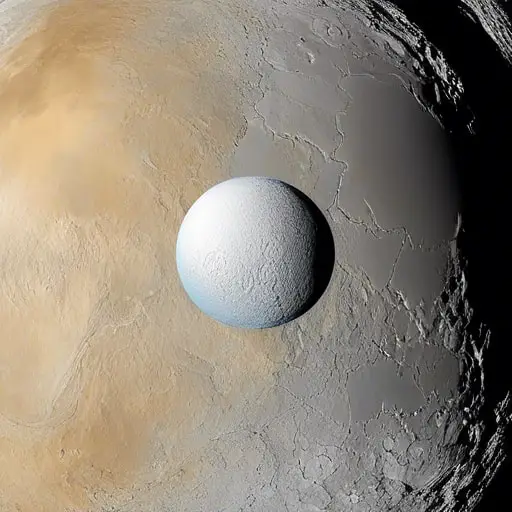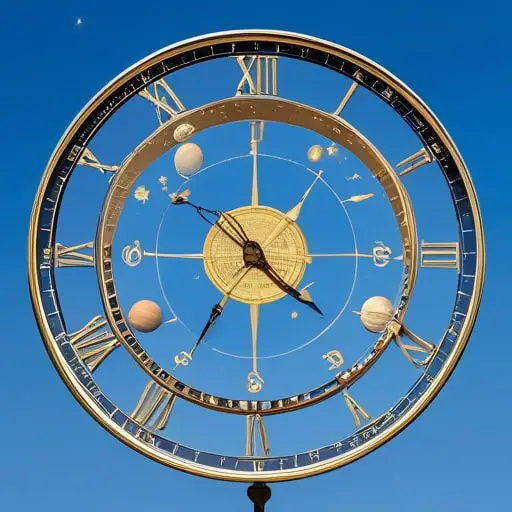Why Is Pluto Red?
Have you ever wondered why Pluto, the dwarf planet at the edge of our solar system, has a distinctive red hue?
The answer lies in the fascinating world of tholins, organic compounds that form in the atmosphere due to radiation. These tholins play a crucial role in creating the reddish patches on Pluto’s surface.
However, there is still much we don’t know about the exact cause of these red spots and the nature of the red material. Join us as we explore the intriguing chemistry behind Pluto’s color and delve into the ongoing research that aims to unravel this cosmic mystery.
Key Takeaways
- Tholins, organic compounds formed due to radiation, are responsible for the red patches on Pluto’s surface.
- Sunlight, specifically ultraviolet or cosmic radiation, plays a crucial role in the formation of tholins on Pluto.
- The exact process of tholin formation and accumulation is not fully understood, and attempts to recreate the reddish hues in a laboratory have been unsuccessful.
- There may be a possible connection between volcanic activity on Pluto and the formation of the red patches, as volcanic eruptions could release gases and volatile compounds that react with sunlight to form tholins.
The Composition of Pluto’s Surface
The composition of Pluto’s surface, as revealed by NASA’s New Horizons spacecraft in 2015, includes large reddish patches, such as the Cthulhu Macula.
These striking red spots are believed to be caused by the presence of organic compounds known as tholins precipitating onto the planet’s surface.
Tholins are formed in Pluto’s atmosphere due to radiation, when carbon, methane, and carbon dioxide-containing compounds are heated up by ultraviolet or cosmic radiation. The exact process by which these tholins form and accumulate on Pluto’s surface is still not fully understood.
Researchers from Delft University of Technology attempted to recreate the conditions observed in Pluto’s atmosphere in a laboratory chamber, but were unable to replicate the reddish hues seen in the Cthulhu Macula, suggesting that other factors may contribute to the formation of these red patches.
Further studies are needed to unravel the mysteries of Pluto’s composition and the origin of its vibrant red surface.
The Role of Sunlight in Pluto’s Red Color
Sunlight plays a crucial role in determining the vibrant red color of Pluto’s surface, offering valuable insights into the planet’s geology, potential astrobiological processes, and the formation and evolution of celestial bodies in the outer regions of the solar system.
Tholins, organic compounds formed in Pluto’s atmosphere due to radiation, are believed to be responsible for the reddish patches observed on the planet’s surface.
Ultraviolet or cosmic radiation heats up carbon, methane, and carbon dioxide-containing compounds, leading to the precipitation of tholins onto Pluto’s surface and the resulting red color.
Attempts to recreate Pluto’s atmosphere in a lab setting haven’t fully replicated the exact reddish hues seen on Pluto, suggesting other contributing factors.
Cosmic rays, porous regions from ice sublimation, and Pluto’s weak gravity may also play a role in the formation of the red spots.
Understanding the influence of sunlight on Pluto’s red color is crucial for unraveling its geological processes and providing insights into astrobiology and the formation of celestial bodies in the outer reaches of our solar system.
The Discovery of Tholins on Pluto
Tholins, organic compounds formed in Pluto’s atmosphere due to radiation, have been discovered on the surface of the dwarf planet, shedding light on the mysterious red spots observed by NASA’s New Horizons spacecraft. These huge red patches, particularly the Cthulhu Macula, have puzzled scientists for years.
Tholins are created when carbon, methane, and carbon dioxide-containing compounds are exposed to ultraviolet or cosmic radiation, resulting in the formation of complex organic molecules.
The New Horizons probe confirmed the existence of tholins on Pluto’s surface, providing evidence that these compounds are responsible for the planet’s reddish hue.
However, recreating the exact reddish hues of the Cthulhu Macula in the laboratory remains a challenge, suggesting that other factors may contribute to the formation of the red spots.
The discovery of tholins on Pluto represents a significant breakthrough in our understanding of the dwarf planet’s geology and astrobiological potential.
As reported by New Scientist, further exploration and data collection are needed to fully unravel the mysteries surrounding Pluto’s enigmatic red patches.
The Chemical Reactions That Create Red Tholins
After the discovery of tholins on Pluto’s surface, scientists have been investigating the intricate chemical reactions that give rise to these red organic compounds. The formation of red tholins involves a series of complex processes triggered by radiation.
- Ultraviolet or cosmic radiation interacts with carbon, methane, and carbon dioxide-containing compounds in Pluto’s atmosphere.
- The radiation heats up these compounds, causing them to break apart and recombine in new ways.
- As a result, tholins are formed and precipitate onto the surface of Pluto.
The accumulation of tholins on the planet’s surface gives rise to the observed reddish patches, such as the Cthulhu Macula.
To better understand these reactions, researchers have replicated Pluto’s atmospheric conditions in laboratory chambers.
Despite these efforts, the exact cause of Pluto’s giant red spots remains elusive. Further research and missions are necessary to gather more data and unravel this intriguing mystery.
The Influence of Pluto’s Atmosphere on Its Color
The color of Pluto’s surface is influenced by the composition of its atmosphere and the intricate chemical reactions that occur within it.
The reddish patches seen on Pluto’s surface are believed to be caused by tholins, which are organic compounds formed in the atmosphere due to radiation. Tholins are created when carbon, methane, and carbon dioxide-containing compounds in Pluto’s atmosphere are heated by ultraviolet or cosmic radiation.
However, recreating Pluto’s atmosphere in a laboratory chamber and subjecting it to plasma didn’t fully replicate the observed reddish hues.
This suggests that other factors, such as cosmic rays or porous regions, may also contribute to the formation of the red spots.
The exact cause of these giant red spots on Pluto is still unknown, highlighting the need for further research and data gathering.
Understanding the nature of the red patches on Pluto’s surface can provide valuable insights into the dwarf planet’s geology, astrobiology, and its implications for the search for life beyond Earth.
The Possible Connection Between Pluto’s Red Patches and Volcanic Activity
Volcanic activity may potentially be connected to the formation of the red patches observed on Pluto’s surface.
While the exact cause of these patches isn’t yet fully understood, scientists have hypothesized several possible connections to volcanic activity.
- Volcanic eruptions on Pluto could release gases and volatile compounds, such as sulfur, which could react with sunlight and other atmospheric constituents to form tholins, the organic compounds responsible for the red color.
- The heat from volcanic activity could also contribute to the formation of tholins by providing the necessary energy for chemical reactions to occur.
- Volcanic vents or fissures could release plumes of gases and particles into the atmosphere, which could then settle on the surface, creating the red patches.
- The presence of volcanic activity on Pluto would provide a contextually relevant explanation for the formation and distribution of the red patches, as volcanic processes are known to alter the composition and appearance of planetary surfaces.
Understanding the potential connection between volcanic activity and the red patches on Pluto’s surface is crucial in unraveling the mysteries of this distant celestial body and gaining insights into the evolution and composition of dwarf planets.
Further research and future missions are necessary to explore this intriguing phenomenon.
The Ongoing Research and Future Discoveries Surrounding Pluto’s Redness
As scientists continue to unravel the mysteries surrounding Pluto’s redness, ongoing research and future discoveries are shedding light on the complex processes that contribute to the formation of these enigmatic red patches on the dwarf planet’s surface.
The current understanding suggests that the reddish hue on Pluto’s surface is caused by tholins, organic molecules formed in the atmosphere due to radiation and then deposited onto the planet’s surface.
However, recent studies have shown that recreating these atmospheric conditions in a lab doesn’t fully replicate the exact reddish hues observed on Pluto, indicating the presence of other contributing factors.
This has prompted suggestions for a return mission to gather more data and further investigate the origin of Pluto’s giant red spots. Such research is crucial in understanding not only the geological processes on Pluto but also the search for life beyond Earth and the composition of dwarf planets.
The ongoing exploration and future discoveries hold the potential to unlock the secrets of Pluto’s redness and provide valuable insights into the evolution of our solar system.
Frequently Asked Questions
Why Is the Ice on Pluto Red?
The ice on Pluto appears red due to the presence of tholins, organic compounds formed from radiation and atmospheric chemicals. Despite efforts to recreate the conditions, the exact cause of the red color remains unknown.
What Is the Original Color of Pluto?
The original color of Pluto is uncertain, as it is difficult to determine without direct observation. However, based on the composition of its surface, scientists believe it may have been a dark reddish-brown or grayish color.
Is Pluto a Red Planet?
Pluto is not officially considered a red planet, but it does have giant reddish patches on its surface. Scientists believe these spots are caused by tholins, organic compounds formed due to radiation.
What Causes the Dark Reddish Colored Regions on Pluto?
The dark reddish colored regions on Pluto are caused by tholins, organic compounds formed in the atmosphere due to radiation. These compounds precipitate onto the planet’s surface, creating the observed patches. The exact cause of their formation is still unknown.
Conclusion
So there you have it, the mysterious red color of Pluto remains an enigma. Despite our knowledge of tholins and their role in creating the reddish patches on Pluto’s surface, the exact cause and nature of this red material are still unknown.
Further research is necessary to unravel this cosmic puzzle and shed light on the possible connection between Pluto’s redness and its volcanic activity.
The secrets of the red planetoid continue to captivate and intrigue scientists, promising future discoveries that will deepen our understanding of this distant world.











